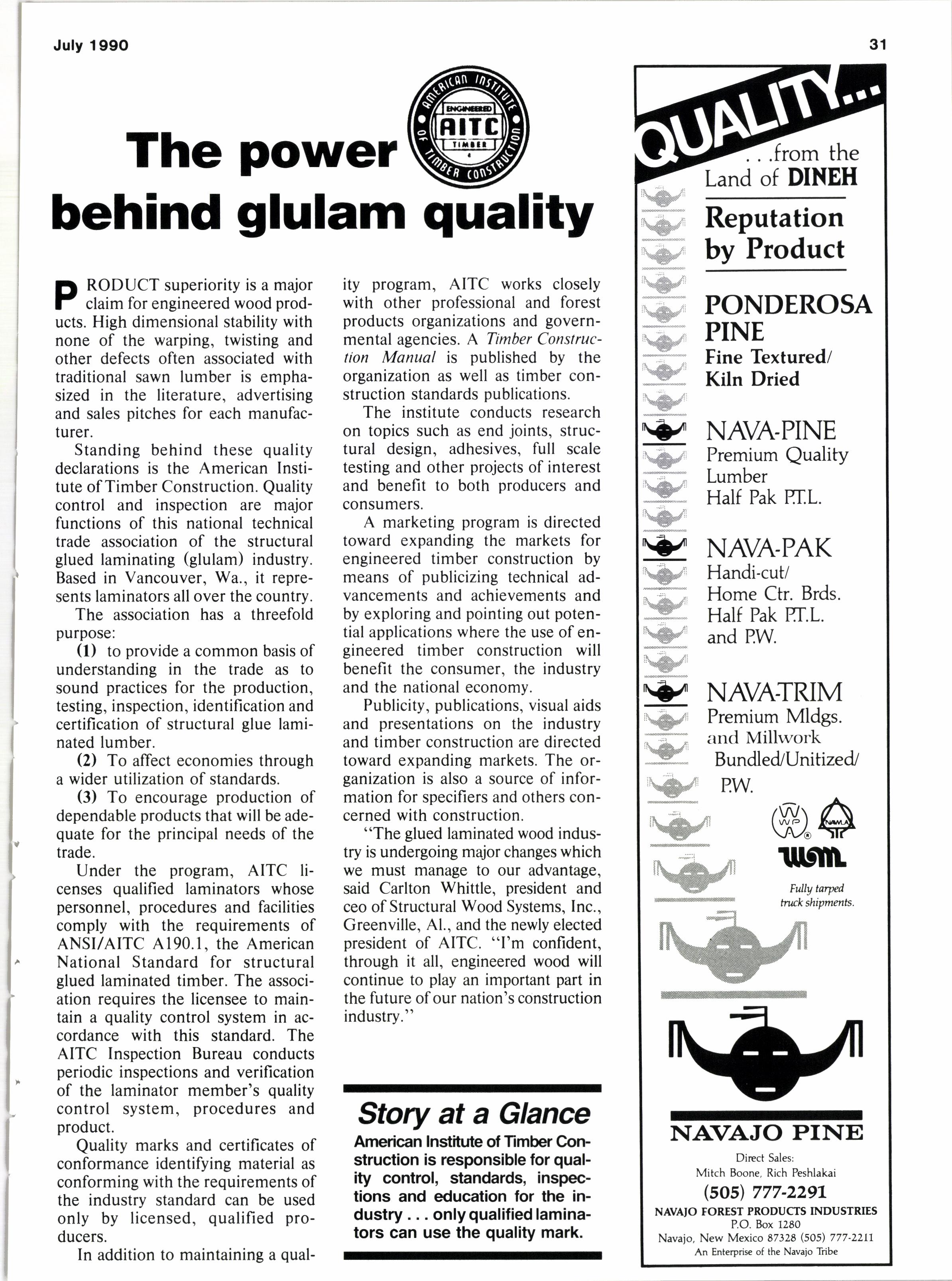
2 minute read
Rosewood=araregift from the Tropics
IAENTURIES-OLD rosewood
\Jmay be one of the rarest and finest of all hardwoods. Still, countless prized trees have disappeared and been burned along with lesser woods by developers clear-cutting into dense jungles in countries such as Brazil.
Unfortunately, beautiful rosewood grows only in small groups of two or three, averaging one tree per 40 acres. Therefore, developers of million dollar projects care little about searching for and salvaging one tree worth a few thousand dollars.
Vintage rosewood, which must age at least 250 years to attain its deep purple-red color, has all but disappeared. Every so often, a tree will be found and quickly sold for up to $40 per board foot. Lighter brown, younger rosewood (75 to 150 years old) is more common.
But scarcity is not the only obstacle to aged rosewood. Other problems associated with the usuallydeveloping countries of origin include dealing with a foreign people, political problems, clearing customs, and getting a tree, once located, felled, moved out of the jungle and shipped home.
Brazilian rosewood ( Dalbergia nigra), or jacaranda, is perhaps the most cherished form, prized for centuries around the world. It features various shades of dark brown, ranging from chocolate to violet, with dark brown streaks or black pigment lines. Its heartwood emits a rosy fragrance.
Other types of genuine rosewood are also sought after. East Indian rosewood (Dalbergia latifolia), or Bombay blackwood, is a very durable hardwood, colored dark purple to ebony with streaks of red or yellow.
Variations include Wild Indian rosewood, which is similar to East
Story at a Glance
Beautiful rosewood must age 250 years to reach its deep purple color. . .rare trees are sometimes clear cut in developing countries. most uses are decorative.
very tough and ranks high in all strength categories.
Tulipwood ( Dalbergia frutescens), or pinkwood, is a true rosewood but with a completely different appearance. It is a pink-yellow with a pronounced striped figure in varying shades of salmon pink and rose red to violet. It also grows in Brazil and other parts of tropical South America.
Cocobolo (Dalbergia retusa), or granadillo, is Central America and Mexico's version. It has a wild grain and a heartwood that appears between brilliant orange and streaked dark brown. It is extra strong, durable and resistant.
Honduras rosewood ( Dalbergia stevensonii), or nogaed, grows exclusively in Belize. The hardwood is dark brown with tan to pink streaks and crimson to black grain lines. It is equally durable, dense and tough.
Indian rosewood but with a wavy, irregular grain instead of a straight grain; Indonesian rosewood, which is slightly pale, and Plantation East Indian rosewood, which is pale and has a wide grain.
Kingwood ( Dalbergia cearensis), or violetwood, is a luminescent violet with black streaks and a mottled grain. Found in Brazil, kingwood is
But since rosewood is so rare, it is not often used to take advantage of its exceptional strength. Instead, it is mostly devoted to decorative purposes such as mouldings, picture frames, musical instruments, cabinetry, furniture, paneling, veneer and turnery.
One offshoot of the scarcity of the wood is the demand for substitutes, among them morado (Bolivian rosewood), bubinga (African rosewood), bocote (Mexican rosewood), Arizona's desert ironwood, and pau ferro. None of these are true rosewoods.










